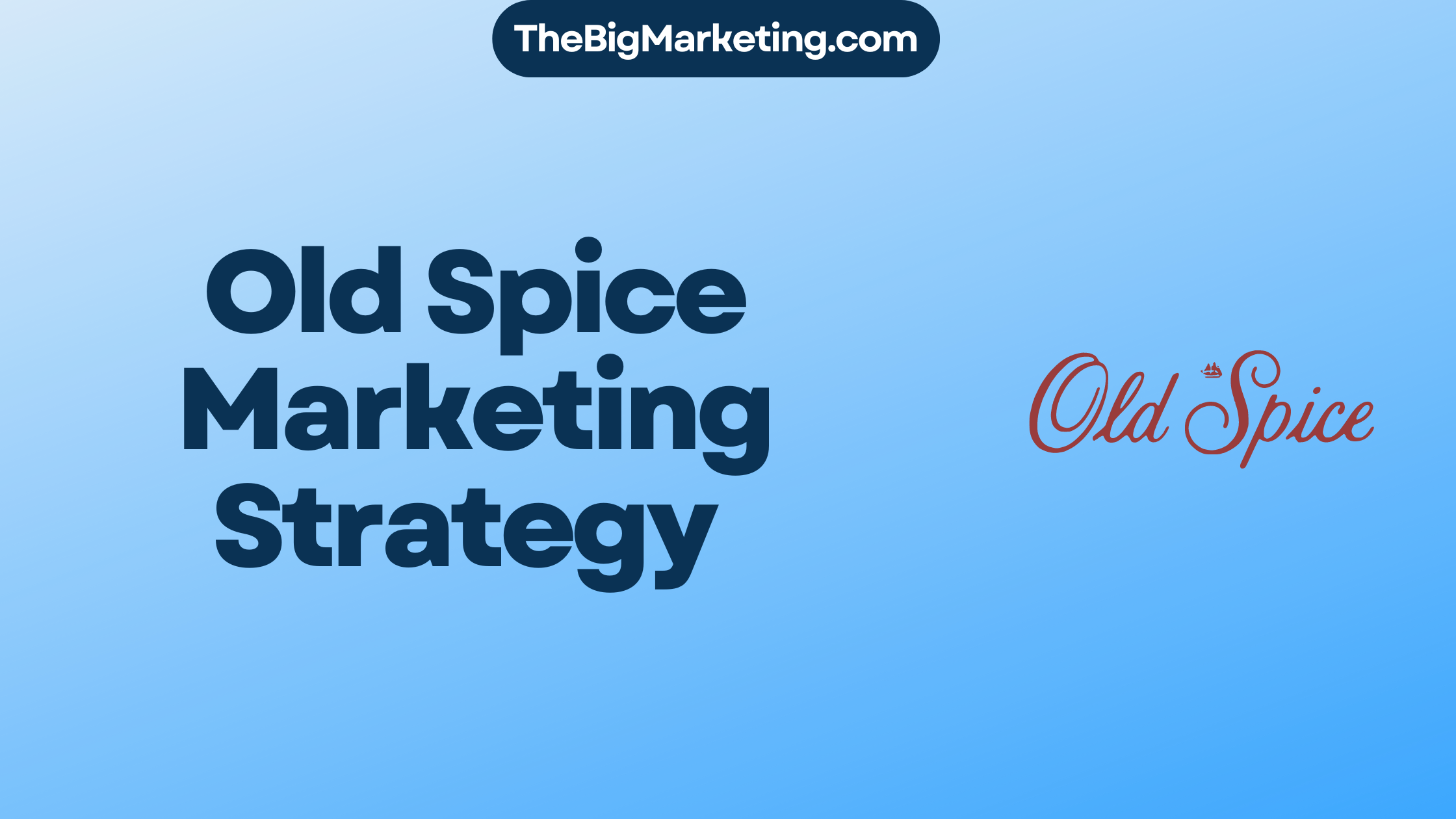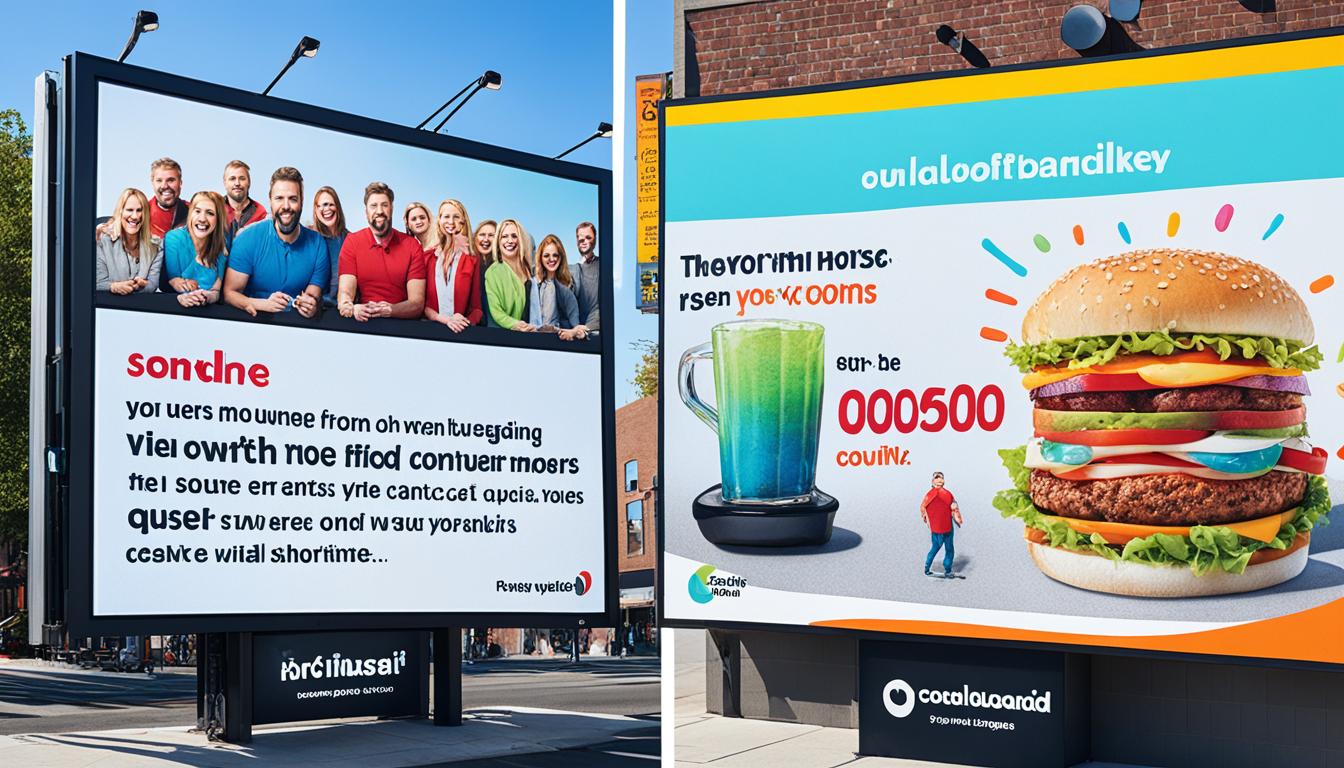When it comes to online advertising and marketing campaigns, there are two key strategies that businesses utilize: performance marketing and digital marketing. While both approaches aim to reach and engage potential customers, they differ in terms of their marketing goals and methodologies.
Performance marketing is a result-centric strategy that focuses on optimizing channels and strategies for short-term goals such as lead generation and conversion. It utilizes targeted advertisements and in-depth ROI analysis to ensure maximum effectiveness and return on investment. On the other hand, digital marketing encompasses a broader range of strategies and channels that aim to promote the brand, sell products, and connect with potential customers through various online channels.
Performance marketing relies on specific metrics such as cost per click (CPC) and cost per action (CPA) to measure the success of campaigns. It focuses on measurable outcomes and conversion rate optimization. In contrast, digital marketing measures metrics like bounce rate, page views, conversion rate, and click-through rate (CTR) to evaluate the performance of marketing efforts and gauge campaign effectiveness. Both types of marketing are important for business success and require effective utilization.
Key Takeaways:
- Performance marketing is a result-centric strategy focused on short-term goals, such as lead generation and conversion.
- Digital marketing encompasses a broader range of strategies and channels aimed at promoting the brand and connecting with potential customers.
- Performance marketing relies on specific metrics like CPC and CPA, while digital marketing measures metrics such as bounce rate and page views.
- Both performance marketing and digital marketing are important for business success.
- Integrating both strategies can lead to a comprehensive marketing approach that achieves optimal results.
Understanding Digital Marketing And Performance Marketing
Digital marketing and performance marketing are two crucial aspects of online marketing strategies that businesses utilize to connect with potential customers and drive results. While they are related, they have distinct characteristics and objectives.
Digital marketing encompasses a wide range of strategies and channels to increase a brand’s online presence, generate leads, drive conversions, and enhance brand awareness and reach. It utilizes diverse digital tools and platforms, including social media, email marketing, search engine marketing, display advertising, video marketing, mobile marketing, and pay-per-click advertising, to engage with the target audience and achieve marketing goals.
Performance marketing is a specific form of digital media advertising that focuses on clients’ actions and results. Advertisers only pay for the performance of an ad, such as clicks, sales, and leads. It primarily involves using paid media platforms like Google Adwords, Facebook ads, LinkedIn ads, and banner ads to drive lead generation and conversions. Performance marketing hones in on specific actions and outcomes, making it a valuable approach for businesses seeking targeted results.
Benefits of Digital Marketing:
- Increased brand awareness
- Effective customer engagement
- Expanded marketing reach
- Enhanced lead generation
- Improved conversion rates
Benefits of Performance Marketing:
- Precise targeting based on specific actions
- Cost-effective advertising with measurable results
- Efficient allocation of marketing budget
- Optimization of campaigns for better performance
- Increased return on investment (ROI)
While digital marketing focuses on broader objectives, performance marketing is result-oriented and pays for specific outcomes. By integrating both strategies, businesses can create a comprehensive marketing plan that combines the brand-building efforts of digital marketing with the focused results of performance marketing. This alignment enables businesses to maximize their online marketing efforts and drive success in the digital landscape.
Metrics to Measure Performance Marketing
Performance marketing relies on specific metrics to measure the success of campaigns. These metrics are essential for understanding the effectiveness of your marketing strategies and optimizing your performance-driven efforts. Here are the key metrics used in performance marketing:
1. Cost Per Mille (CPM)
CPM refers to the cost of showing an ad to viewers 1000 times. While it is a widely used metric in online advertising, it is less focused on in performance marketing. Performance marketing emphasizes other metrics that directly reflect ad performance and conversion.
2. Cost Per Click (CPC)
CPC refers to the cost incurred each time a user clicks on an ad. It provides insights into the effectiveness of your ad copy, targeting, and overall campaign performance. By monitoring CPC, you can optimize your campaigns to drive higher click-through rates and minimize costs.
3. Cost Per Action (CPA)
CPA measures the cost of a specific action taken by the target audience, such as downloading an app, subscribing to a newsletter, or completing a purchase. It helps you evaluate the efficiency and profitability of your marketing efforts. Lower CPA indicates higher campaign effectiveness and better conversion rates.
4. Lifetime Value (LTV)
LTV represents the estimated lifetime value of each customer and their expected spending. It helps measure the long-term profitability of your marketing campaigns by considering the revenue generated from repeated purchases or subscriptions. By analyzing LTV, you can identify high-value customers and tailor your marketing strategies accordingly.
By tracking and optimizing these metrics, you can gain valuable insights into the performance of your marketing campaigns. This data-driven approach allows you to make data-backed decisions, allocate resources wisely, and drive better results in your performance marketing endeavors.
Metrics to Measure Digital Marketing
When it comes to measuring the effectiveness of digital marketing campaigns, various metrics play a crucial role. These metrics provide valuable insights into campaign performance and help marketers understand the impact of their efforts. Here are the key metrics used to measure digital marketing success:
Bounce Rate
The bounce rate is a metric that indicates the percentage of visitors who leave a website without performing any action. A high bounce rate can suggest that visitors did not find the website content engaging or relevant to their needs, indicating a need for improvements in user experience and content strategy.
Page Views
Page views measure the total number of pages viewed by visitors on a website. This metric gives an idea of how engaged visitors are with the website content and helps understand which pages are most frequently accessed. A high number of page views can indicate strong user engagement and interest in the website’s information or offerings.
Conversion Rate
The conversion rate is a key metric used to measure the percentage of conversions from a specific website. Conversions can vary depending on the website’s goals, such as purchases, sign-ups, or downloads. Tracking and improving conversion rates are essential for optimizing digital marketing campaigns and driving desired actions from visitors.
Click-Through Rate (CTR)
The click-through rate (CTR) measures the ratio of total clicks on an ad to the total number of viewers. It is commonly used in paid advertising campaigns to assess the effectiveness of ads in driving clicks and generating website traffic. A higher CTR indicates that the ad content is compelling and resonating with the target audience.
By monitoring these metrics, digital marketers can gain valuable insights into campaign performance and make data-driven decisions to optimize their strategies. The next section will explore the different types of performance marketing in more detail.
| Metric | Description |
|---|---|
| Bounce Rate | The percentage of visitors who leave a website without performing any action |
| Page Views | The total number of pages viewed by visitors |
| Conversion Rate | The percentage of conversions from a specific website, such as purchases or sign-ups |
| Click-Through Rate (CTR) | The ratio of total clicks on an ad to the total number of viewers |
The image above provides an overview of the key metrics used to measure digital marketing success.
In the next section, we will explore the different types of performance marketing.
Types of Performance Marketing
Performance marketing encompasses different types that focus on specific channels and strategies. These types include:
1. Search Performance Marketing
Paying for search ads displayed on search engine result pages to drive website traffic.
2. Social Performance Marketing
Utilizing paid ads and organic posts on social media platforms, focusing on high-quality content for customer engagement.
3. Email Performance Marketing
Using email marketing strategies to grow a business, targeting the right audience with quality content.
4. Publisher Performance Marketing
Displaying paid ads on websites and apps that the advertiser does not own to drive traffic to their own website.
5. Affiliate Performance Marketing
Partnering with affiliate publishers and influencers to drive customer purchases and earn commission.
Types of Digital Marketing
Digital marketing encompasses a wide range of strategies and channels. Some of the types of digital marketing include:
Content Marketing
Creating high-quality content such as blogs, social media posts, videos, webinars, and more to engage the audience and build brand presence.
Search Engine Marketing
Optimizing websites to appear at the top of search engine result pages and using paid ads to increase visibility.
Social Media Marketing
Leveraging various social media platforms to interact and engage with customers through paid ads and organic content.
Paid Advertising
Utilizing paid ads with different payment models like pay-per-click (PPC) and cost per mile (CPM) to reach the target audience and increase brand exposure.
| Type of Digital Marketing | Description |
|---|---|
| Content Marketing | Creating engaging content across various platforms to attract and engage the target audience. |
| Search Engine Marketing | Optimizing websites and running paid ads to increase visibility and drive traffic from search engines. |
| Social Media Marketing | Using social media platforms to connect with the target audience, build brand awareness, and drive engagement. |
| Paid Advertising | Running paid ads on different platforms to reach the target audience and increase brand exposure. |
The Relationship Between Digital Marketing and Performance Marketing
Digital marketing and performance marketing are two interrelated strategies that operate within the digital environment. While digital marketing encompasses various marketing efforts, performance marketing focuses specifically on achieving measurable results. Although performance marketing is a subset of digital marketing, its unique approach, execution, and payment model set it apart.
Digital marketing aims to build a brand presence and foster relationships with customers across different channels. It uses strategies such as content marketing, search engine marketing, social media marketing, and paid advertising to reach and engage with the target audience. Digital marketing also focuses on enhancing brand awareness and cultivating customer loyalty through a holistic marketing approach.
On the other hand, performance marketing hones in on specific outcomes and metrics for campaigns. It emphasizes measurable results and is driven by key performance indicators (KPIs). Performance marketing relies on targeted advertisements and utilizes digital tools and platforms like search engine marketing, social media advertising, and affiliate marketing to drive lead generation, conversions, and sales.
These two marketing strategies can coexist and complement each other within a comprehensive marketing plan. Digital marketing lays the foundation for brand presence and customer engagement, while performance marketing optimizes channels and strategies to drive tangible results.
The Role of Metrics and KPIs
Metrics and KPIs play a crucial role in both digital marketing and performance marketing. Digital marketing utilizes metrics like bounce rate, page views, conversion rate, and click-through rate (CTR) to measure campaign effectiveness and customer engagement. These metrics provide insights into the performance of digital marketing efforts, helping businesses make data-driven decisions for optimizing their marketing campaigns.
Performance marketing, on the other hand, relies on specific metrics such as cost per click (CPC), cost per action (CPA), and lifetime value (LTV) to measure campaign success and return on investment (ROI). These metrics help advertisers assess the effectiveness of their marketing strategies and make adjustments to improve performance and achieve desired outcomes.
By leveraging the right metrics and KPIs, both digital marketing and performance marketing enable businesses to evaluate their marketing efforts, identify areas for improvement, and make data-backed decisions to drive success in the digital landscape.

| Metrics | Digital Marketing | Performance Marketing |
|---|---|---|
| Bounce Rate | ✓ | |
| Page Views | ✓ | |
| Conversion Rate | ✓ | |
| Click-Through Rate (CTR) | ✓ | |
| Cost Per Click (CPC) | ✓ | |
| Cost Per Action (CPA) | ✓ | |
| Lifetime Value (LTV) | ✓ |
While digital marketing provides insights into overall campaign performance and customer engagement, performance marketing focuses on specific actions and outcomes that drive tangible results. By combining the broader goals of digital marketing with the result-oriented approach of performance marketing, businesses can create a comprehensive marketing strategy that maximizes their digital presence and optimizes their marketing efforts.
Integrating Performance Marketing and Digital Marketing
To effectively utilize both performance marketing and digital marketing, brands need to integrate the two strategies into a cohesive marketing plan. This involves defining goals, choosing the appropriate strategy based on those goals, setting a budget, and regularly analyzing and adjusting campaigns for optimal results.
Defining Goals
The first step in integrating performance marketing and digital marketing is to define clear and measurable goals. Whether it’s increasing brand awareness, driving website traffic, generating leads, or increasing sales, having well-defined goals will guide your marketing efforts and help determine the best strategies to achieve those goals.
Choosing the Appropriate Strategy
Once goals are established, it’s important to choose the appropriate marketing strategies to align with those goals. This may involve leveraging performance marketing tactics such as paid search, social media advertising, or affiliate marketing to drive conversions and measurable outcomes. In parallel, digital marketing strategies like content marketing, social media engagement, and organic search optimization can help build brand awareness and foster customer relationships.
Setting a Budget
Setting a budget is crucial for allocating resources effectively between performance marketing and digital marketing efforts. By understanding the specific needs and goals of the brand, you can determine the appropriate budget allocation for each strategy. This budget should take into account advertising costs, marketing tools, content creation, and any other expenses necessary to support your marketing plan.
Regular Analysis and Adjustment
Analyzing the performance of your marketing campaigns is essential to measure effectiveness and identify areas for improvement. By regularly analyzing key metrics and KPIs such as conversion rates, click-through rates, and ROI, you can make data-driven decisions and adjust your campaigns accordingly. Identifying trends, audience preferences, and areas of inefficiency will allow you to optimize your marketing efforts and maximize results. This ongoing analysis and adjustment process is crucial for staying competitive in the ever-evolving digital landscape.
By effectively integrating performance marketing and digital marketing strategies, brands can create a symphony of success. Utilizing a comprehensive approach that combines the focused outcomes of performance marketing with the broader goals of digital marketing, brands can maximize their marketing efforts, achieve their desired outcomes, and stay ahead in today’s digital marketplace.
The Importance of a Comprehensive Marketing Approach
In the digital landscape, having a comprehensive marketing approach that incorporates both performance marketing and digital marketing is crucial. By working with a partner like Trizone, brands can benefit from years of expertise and experience in orchestrating successful marketing campaigns. A comprehensive approach allows brands to build brand awareness, engage with customers, and achieve measurable results. The key is to understand that it’s not an “either-or” scenario but rather a blend of both strategies that can lead to marketing success. With a clear goal, realistic expectations, and a dedicated team, brands can navigate the digital world and outperform their competitors.
Benefits of a Comprehensive Marketing Approach:
- Enhanced Brand Awareness: By combining performance marketing and digital marketing strategies, brands can amplify their brand presence and reach a wider audience.
- Improved Customer Engagement: A comprehensive approach allows brands to connect with customers through multiple channels, fostering meaningful interactions and building lasting relationships.
- Targeted Marketing Journey: By utilizing performance marketing tactics, brands can guide customers through their marketing journey, from initial awareness to conversion and retention.
- Results-Driven Approach: Performance marketing provides a data-driven approach that enables brands to measure and optimize their marketing efforts based on real-time results and insights.
- Maximized Return on Investment (ROI): By aligning performance marketing and digital marketing strategies, brands can achieve a higher ROI by utilizing targeted advertisements and optimizing marketing campaigns for maximum effectiveness.
With a comprehensive marketing approach, brands can leverage the strengths of both performance marketing and digital marketing to create a powerful and results-oriented marketing strategy. By partnering with Trizone and embracing this multifaceted approach, brands can effectively build brand awareness, engage customers, and drive business growth in the digital age.
Conclusion
In conclusion, the comparison between performance marketing and digital marketing highlights their distinct characteristics and strengths. Performance marketing is a result-oriented approach that focuses on specific outcomes and payment for performance. On the other hand, digital marketing encompasses a broader range of strategies and channels aimed at building brand presence and engaging with customers.
Both performance marketing and digital marketing play vital roles in a comprehensive marketing plan. By understanding the unique features of each strategy and effectively leveraging them, brands can achieve their marketing goals. Performance marketing can drive immediate results and optimize campaigns for lead generation and conversions. Meanwhile, digital marketing provides a holistic approach to enhance brand awareness and connect with customers through various online channels.
By integrating performance marketing and digital marketing into a single marketing strategy, brands can leverage the strengths of both approaches. This requires setting clear goals, allocating an appropriate budget, and regularly analyzing and adjusting campaigns. With the right approach and understanding, brands can harness the power of performance marketing and digital marketing to drive success in the digital era.
FAQ
What is the difference between performance marketing and digital marketing?
Performance marketing is a result-centric strategy that focuses on optimizing channels and strategies for short-term goals such as lead generation and conversion. Digital marketing encompasses a broader range of strategies and channels that aim to promote the brand, sell products, and connect with potential customers through various online channels.
What are the key metrics to measure performance marketing?
The key metrics to measure performance marketing include cost per mille (CPM), cost per click (CPC), cost per action (CPA), and lifetime value (LTV).
What are the key metrics to measure digital marketing?
The key metrics to measure digital marketing include bounce rate, page views, conversion rate, and click-through rate (CTR).
What are the types of performance marketing?
The types of performance marketing include search performance marketing, social performance marketing, email performance marketing, publisher performance marketing, and affiliate performance marketing.
What are the types of digital marketing?
The types of digital marketing include content marketing, search engine marketing, social media marketing, and paid advertising.
How do digital marketing and performance marketing relate to each other?
Digital marketing is a broader strategy that encompasses various marketing efforts, while performance marketing focuses specifically on achieving measurable results. Performance marketing is a subset of digital marketing, but its unique approach, execution, and payment model set it apart.
How can performance marketing and digital marketing be integrated?
To effectively utilize both performance marketing and digital marketing, brands need to integrate the two strategies into a cohesive marketing plan. This involves defining goals, choosing the appropriate strategy based on those goals, setting a budget, and regularly analyzing and adjusting campaigns for optimal results.
Why is a comprehensive marketing approach important?
A comprehensive marketing approach that incorporates both performance marketing and digital marketing is crucial in the digital landscape. It allows brands to build brand awareness, engage with customers, and achieve measurable results. By combining both strategies, brands can create a symphony of success and achieve their desired marketing outcomes.







